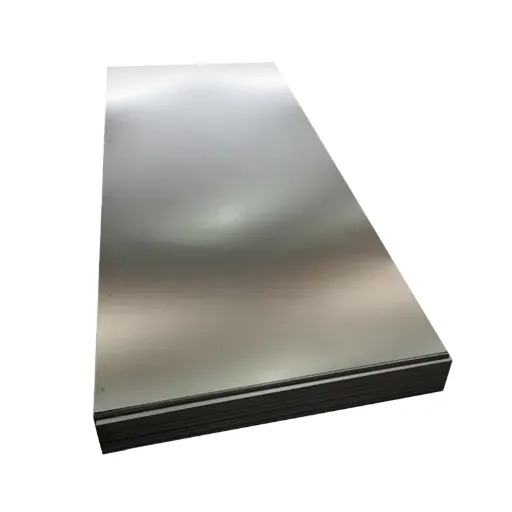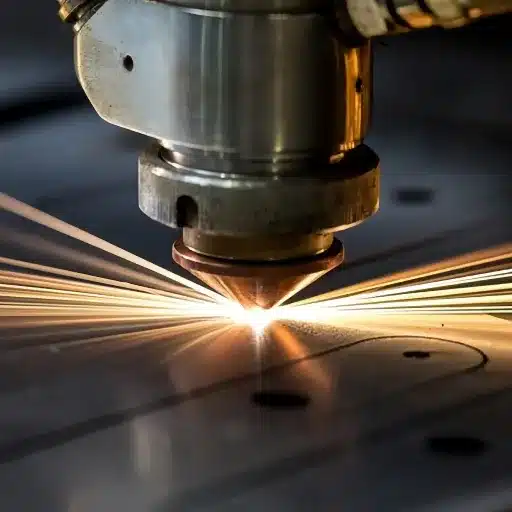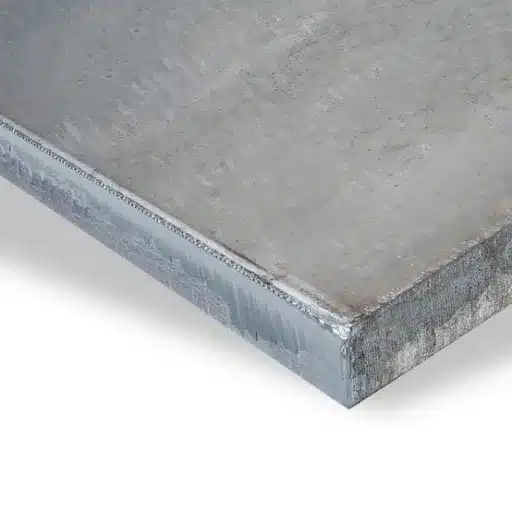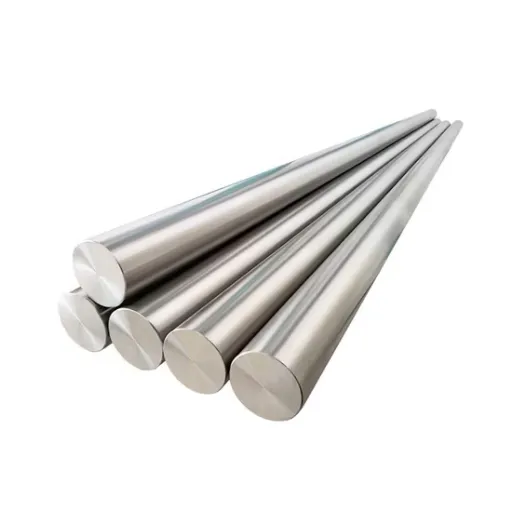The introduction of Galvanized steel to many industries was a game changer due to its resistance to rust, cost effectiveness, and sturdy nature. Irrespective of the enormous diversity, the s320gd coil is the most suitable one for manufacturers, constructors, etc. So what about the S320GD coil makes it so feature-rich, and why is there a preference for this type in many cases? This text comprehensively explains how special this galvanized steel is, where it is used, its advantages, how it is made, and how it has altered present-day industrial activities. This article will interest infrastructure design practitioners, engineers, developers, and those interested in understanding the material perspective of technological advances. It shall cover the significance of S320gd coils, which are usable in several processes.
Introduction to S320GD
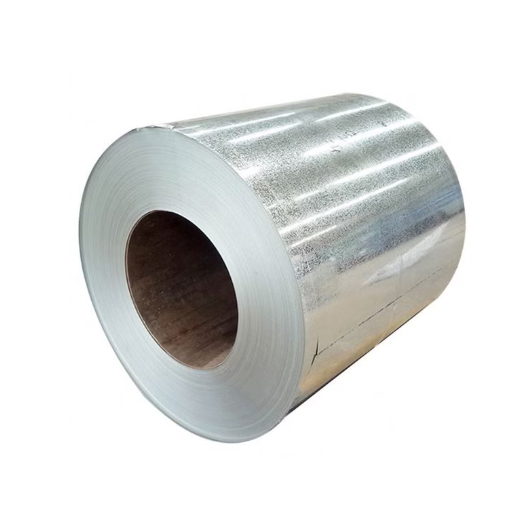
One of the main qualities of the s320gd coil is its strength, being able to withstand rust and remain intact. The hot-dip galvanization process includes coating the steel with zinc, giving special protection from corrosion, and improving its sanitary characteristics in harsh operating conditions. Generally, galvanized and ASTM A653 bare surfaces are preferred for making structural units, machinery, and automotive at large due to the article´s special characteristics: the strength of metal, the way it can deform, and the defensive properties of the article. It is very adaptable, so the fruits of its labor are plated with diverse structures for variable purposes to different extents.
What is S320GD Steel Coil?
S320GD coil is popular for many reasons, one of which is that it is a high-performance structural steel widely applied in many construction and industrial areas. It specifically represents a grade of hot-dip galvanized plates, which have improved mechanical characteristics, plus a good layer of zinc on the surface, thus ensuring no rust gets to the metal. The “S” is the symbol of the structural type of use, and the number “320″ indicates that the safe yield stress is at least 320 MPa. As a result, it is utilized wherever high resistance for long-term and short-term static and dynamic structural and non-structural components is emphasized.
Features of Broken–Down S320GD Steel Coils
- High Strength Levels:
- The minimum yield strength of 320 MPa enables a very high loading capacity. This is true for construction with given limitations or specially designed for use.
- Resistance to Corrosion:
- This zinc coating created by the hot-dip process provides a much longer service life under corrosive conditions.
- Reliability in Workability:
- The s320gd coil is quite pliable and can, therefore, be molded into various shapes and patterns without much effort or distortion of the structure.
- Dimensions:
- Produced within narrow limits for specific applications to assure durability and accuracy throughout production.
S320GD Steel Coil Usage
- Benefits to the building sector:
- It is frequently employed in building cover, paneling, and supporting structures.
- Vehicle building:
- It is used in components where both in-yard and out-yard protections are required.
- Manufacturing of Machinery:
- It manufactures heavy loads such as machine parts and storage elements.
European Standard, Control
In compliance with EN 10346 standards, which define the properties of galvanised steel, S320GD has been developed with due reference to the European manufacturing practices. The elements of a standard S320GD galvanized steel composition include:
- Carbon (C): less than or equal to 0.20 %
- Manganese (Mn): less than or equal to 1.70 %
- Silicon (Si): 0.60 % or less
- Phosphorus (P): at least 0.10%
- Sulphur (S): Meeting a concentration level of below or equal to 0.045%
The zinc thickness is generally from 275g/m² to 600g/m², which allows shielding in unfavorable surroundings for long periods.
Why Use S320GD Steel Coil?
- The state-of-the-art corrosion operating mechanisms give due account for extended durability.
- Economical construction materials within the context of aging.
- The products do perform best in extreme operational and/or environmental situations,
- The products are recyclable and do not require maintenance, aligning with the green growth drive.
The S320GD coil, by virtue of its strength, its resistance to rusting or swirling, and its ability to manage borders, can adapt to changes in individuals’ ways of life and enable engineering facilities, thus making it a material that both engineers and manufacturers prefer.
Properties of S320GD Galvanized Steel
With galvanization included in its formulations, S320GD steel is applicable in a broad scope of processes because of its clearly defined characteristics. Some distinct benefits of this kind of steel are given below:
- Strength
Has at least about 320 MPa of yield strength, which means it can bear structure and loads.
- Corrosion
Has a zinc coating, which prevents rusting and oxidising even in the most aggressive environment.
- Workability
It is very easy to form, can be easily welded, and accommodates different fabrication methods.
- Surface Coating
Coated by hot dip melting, which provides good surface hardening and protection against wear.
- Sustainable
Material Through and Through Steel, where real and apparent steel consumption, including SCRAP, is 100% recyclable.
With these advantages, S320GD steel fully coated with zinc is cost-effective for any industry focused on strength and elasticity and designed for a long-lasting function. A S320GD coil, more specifically the S320GD, looks like a flat coil of coated S320GD, which will definitely look like a flat coil.
Applications of S320GD in Industry
| Industry | Application |
|---|---|
| Construction | Roofing, siding, and façade systems |
| Structural beams, columns, and frames | |
| Drainage systems like gutters and pipes | |
| Sandwich and composite panels | |
| Automotive | Car body panels and chassis components |
| Reinforcement parts and exhaust systems | |
| Appliances | Refrigerator bodies and washing machine drums |
| Microwave and air conditioner casings | |
| Electronics | Electrical enclosures and server racks |
| Furniture | Shelving, bed frames, and cabinets |
| HVAC | Ductwork and ventilation systems |
| Renewable Energy | Solar mounting systems |
| Storage | Cold storage and containers |
| Machinery | Light industrial machinery components |
Galvanization Process
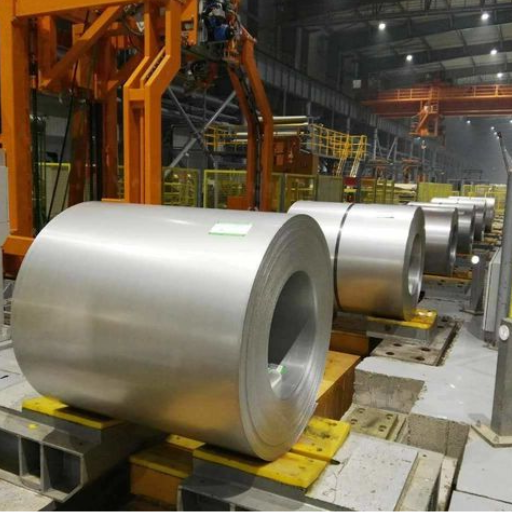
Steel is typically covered in zinc, where necessary, to receive protection from the perpetual risk of iron oxides or ‘rusting’. The common practice is hot-dip galvanizing, whereby steel is submerged in molten zinc, allowing it to coat the steel thoroughly. It also helps since the zinc offers protection from various contaminants, such as water and oxygen, that eventually put a coating on the steel surface. Such processing improves the steel’s durability and makes it more wear-resistant and less susceptible to adverse and extreme conditions, thus serving in various industrial and construction functions.
The coated steel sheet is often referred to as E S320GD because it is a heat-treated S320GD coil that is often used in construction sites.
What is Hot Dip Galvanization?
Hot dip galvanizing protects steel or iron from rusting by covering it with a layer of zinc. This process was carried out by immersing the complete article in a bath of heated zinc metal, 449°C (approx 840°F), so that as the article is withdrawn, a layer of zinc is left on its surface. A metal reaction occurs such that the zinc metallurgically bonds with the steel, forming an array of zinc-iron alloys with a pure zinc prone to crystallization at the surface.
Advantages of Hot Dip Galvanizing
- High Functional Protection Against Corrosion
The coating in question is zinc, which performs surface protection against the core steel from water, air, and other harmful elements. To this end, the studies have shown that galvanized steel can remain under control for more than half a century in most innocent conditions, whereas in the most corrosive conditions, such as islands, about 20–25 years can be expected.
- Durability
The reported efficiency of painted systems of corrosion coupon tacked coatings is below that of galvanized coatings, which is evident in the closure of maintenance cycles. For instance, structures such as bridges and transmission towers have galvanized steel, which means the maintenance costs over decades are minimal.
- Environment
It is well known that zinc is a metal that is 100% recoverable. The process of galvanizing is also nondestructive. Organizations such as the International Zinc Association and others underline that galvanization is highly advantageous in industries that need sustainable practices.
- Economic Viability
Although the initial cost of s320gd coil hot dip galvanizing can be higher than other coatings, reduced maintenance requirements make it cheaper in the long term.
Stepwise Process of Galvanic Coating by Hot Dip Method
- Surface Treatment
This indispensable phase consists of washing the steel with a degreaser, immersing it in acidic conditions for pickling purposes, and then applying flux to make the surface free of chemical contamination and ready for galvanization.
- Molten Zinc Dipping
The prepared steel is immersed in hot zinc, thus making the zinc layer on the metal equal and uniform.
- Stabilizing and Quality Control
Upon extraction, the coated part is cooled either in water or air, or most often both, and then examined for possible failure and proper coverage.
Uses of Hot Dipping Galvanization
The following process of coating applies to more than a few industries, including but not limited to building, engineering, car manufacturing, and even food production. For example, such works that may benefit from such coatings are the following:
- Bridge, stadium, and building structures;
- Frames, chassi,s and other parts of automobiles;
- Telecommunication, electric poles, and power networks that are constantly exposed to the environment;
- perimeter walls and protective structures for the workplace or home.
Levels of Performance
According to the American Institute of Galvanising (AIG), the latest experiments have revealed that galvanized steel can last up to 10 times longer than naked steel in similar conditions. In that respect, it is also crucial that its sturdiness and scratch resistance help many low-budget structures use this material for specific infrastructure.
This is also why many industries continue to enjoy the process of hot dip galvanizing, as it significantly extends the life span of steel and wood structures and provides many performance advantages.
Benefits of Hot Dip Galvanized Steel
| Key Benefit | Description |
|---|---|
| Corrosion Resistance | Protects steel with barrier, cathodic, and zinc patina layers. |
| Durability | Abrasion-resistant and withstands harsh conditions. |
| Longevity | Maintenance-free for decades, even in tough environments. |
| Cost-Effective | Lower initial and life-cycle costs compared to other coatings. |
| Complete Coverage | Protects all surfaces, including edges and recesses. |
| Sustainability | Made from recyclable materials; environmentally friendly. |
| Ease of Inspection | Coating condition easily assessed visually or with simple tests. |
| Quick Application | Fast process, unaffected by weather, ready for immediate use. |
| Hygienic | Easy to clean, suitable for sanitary applications. |
| Versatility | Applicable to various shapes, sizes, and industries. |
Understanding Zinc Coating and Its Role
A zinc coating in s320gd coil is one that prevents or acts as a barrier to the external environment, preventing the exposure of the metallic component, which is the steel. In addition, protecting the milled steel in its use after application by ensuring that it does not corrode enables preservation of the milled steel even in harsh and extreme conditions. Some more information about zinc coating is given below.
- Corrosion Control
Zinc provides a layer that will sacrifice itself while in contact with oxygen and moisture, and thus the steel will not be affected by rust and cannot deteriorate for a long time.
- Life Cycle
It has been advocated that galvanized steel, sometimes containing zinc, could withstand different conditions for fifty years and even more, greatly reducing efforts in replacement and maintenance.
- Repair Function
Any small abrasions or cuts in the zinc coating can be repaired by forming zinc oxides or carbonates, preserving the coating’s performance.
- Maintenance free
The application of hot dip galvanization is the cheapest of almost all other coating methods in the beginning. It takes a long time, which means less maintenance expenses.
- Application
Steel with a zinc layer is chiefly used in the construction, car industry, agriculture, oil and gas, and other branches because of its strength and durability in different environmental conditions.
These factors, excluding others, ought to enhance the zinc coating of steel since such interventions are widely used.
Chemical Composition and Standards

Zinc coatings predominantly comprise a higher percentage of pure zinc in the coatings with very few impurities within the limits allowed, like lead, cadmium, and iron. This varies as there are standards applicable to the chemical composition of the coating, such as ASTM A123/A123M and ISO 1461, which determine inner uniform coating thickness and overall weathering through the process. These prescribed standards are designed in such a way as to outline the proportions of the coating that is to be applied, or rather, ways of testing it and of defining suitable performance, to ensure that the steel in question coats appropriately for its use. It will also cover the touching base on the s320gd coil specifications and the durability required for effectorated applications.
Chemical Composition of S320GD
S320GD is a type of reinforced construction steel with a high strength that is covered with a thick layer of zinc by dipping it in hot molten zinc. Its composition is constructed in a way that offers exceptional mechanical properties, and the outer layer is the zinc coat that acts as an anti-rust shield. In line with European Norm 10346, it is given that the average chemical content for S320GD is:
| Element | Content (%) |
|---|---|
| Carbon (C) | ≤ 0.20 |
| Silicon (Si) | ≤ 0.60 |
| Manganese (Mn) | ≤ 1.70 |
| Phosphorus (P) | ≤ 0.10 |
| Sulfur (S) | ≤ 0.045 |
| Aluminum (Al) | ≥ 0.015 |
| Nitrogen (N) | ≤ 0.012 |
For the steel to be worthy of various tensile, stretch and joinability requirements, it should possess these properties. Applying zinc surface coating on the S320GD increases the material’s resistance against environmental degradation. Hence, such metals are preferred in places where usage conditions are severe, such as the building industry, automotive industry, and engineering. Additional criteria, such as coating thickness and performance assessment, are typically performed for such implementation to ensure the use of s320gd coil is within the EN 10346 standards.
ASTM Standards for Galvanized Steel
Galvanizing is a process that covers two types of standardized steel materials, the structural steel and the steel sheets, which need to be thick enough to be used in building construction applications. Within the ASTM standards for galvanized steel, specifically ASTM A123 for s320gd coil and ASTM A653 for other galvanizing steel products, these standards describe requirements for zinc coatings, including coating thickness, retention, and attitude to corrosion therein of materials and works supplying such products in the course of industrial use.
Comparison with Other Carbon Steel Grades
| Parameter | S320GD Galvanized Coil | Other Carbon Steel Grades |
|---|---|---|
| Corrosion Resistance | Excellent due to zinc coating | Prone to rust, needs extra protection |
| Durability | High, ideal for harsh environments | Lower, susceptible to corrosion |
| Strength | Moderate, suitable for structural use | Higher, especially in high-carbon steel |
| Formability | Good, suitable for shaping | Varies, better in low-carbon steel |
| Cost | Higher initial cost, low maintenance | Lower upfront, higher upkeep costs |
| Applications | Construction, automotive, appliances | Tools, machinery, industrial structures |
| Maintenance Needs | Low, minimal repairs required | High, frequent maintenance needed |
| Appearance | Silver-gray with zinc coating | Varies, often dull over time |
Product Description and Details
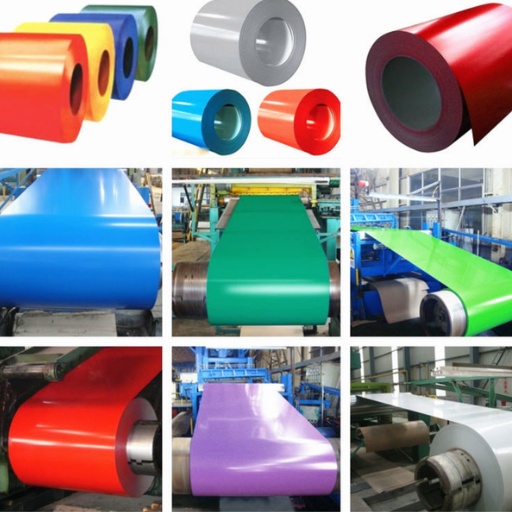
Steel that is carbon-based but with the addition of a zinc coating is termed as galvanized steel. The purpose of the zinc coating is to keep the steel from rusting, and hence, more usable over a long period in various sectors like construction, transport, and manufacturing. Different grades, accessories, and thicknesses are available to satisfy other requirements of this product. It has no vocational risk as long as EN 10346 and ASTM A653 are adhered to in using this material among other applications.
Understanding Surface Treatments
The emphasis on performance enhancement and durability makes it easier for me to comprehend what surface treatments of S320GD coil involve. The purpose of these treatments is not their straightforward application that needs complex reasoning about their purpose to step on steel. Still, it precisely accomplishes the task by protecting the steel against corrosion, increasing the coating adherence, and making it look appetizing. Therefore, depending on the construction and details of a project, more specific treatments can be applied, such as chromating, oiling, or phosphating, which are basic among the requirements treatments, and most importantly, the material, no matter what treatments are applied, behaves as it should in real-life conditions.
Lead Time and Supplier Considerations
Locating S320GD galvanized steel coils is relatively more straightforward than soliciting quotes, which significantly relies on the supplier’s lead time and performance. Recently published market studies, however, indicate that the lead time for S320GD coiled steel differs and ranges from a minimum of 4.1 weeks to a maximum of 7.8 weeks. This is dependent on the production line time tables, transport challenges, and the prevailing demands of the world. In addition to such circumstances, there are also some primary factors such as scarcity of the essential raw materials or high demand for finished steel works in construction and automotive sectors, which increase these limits.
The appropriate supplier selection not only avoids loss of time but also in ensures quality products. The leading suppliers, however, can always set out production timetables for each order, communicate openly, and offer logistical support to avoid interruptions. In addition, some leading suppliers in the world introduce inventory distribution systems to customers so that customers will not have problems of wanting materials when they are due for orders. Moreover, suppliers capable of applying surface alterations according to the customer’s preference, such as phosphating and oiling, help solve the time problem in manufacturing.
According to the recent market analysis of the galvanized sector, demand is rising, with a ratio of 5.2% between 2023 and 2030 per age. This rise in demand points to the importance of working with suppliers who can increase production while still observing strict quality control measures. To reduce the time components, it is also prudent to include availability issues within the regions, workings, and operations of suppliers.
By assessing the performance of the existing supplier, considering their flexibility, and ascertaining their logistical capacity, companies can mitigate the risk of a lack of timely delivery of S320GD galvanised steel coils.
High Strength and Structural Applications
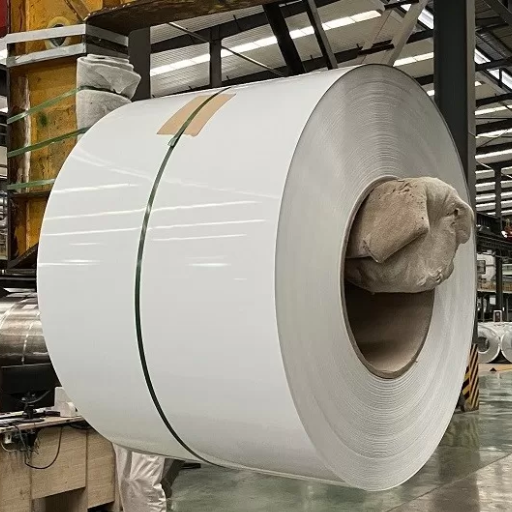
S320GD coil is principally lightweight, corrosion-resistant, high-temperature, and moderate-pressure suitable for the construction of heavy-duty applications. Its corrosion-resistant reaction, which does not allow any rust or stain on it, is ideal for water and other aggressive environments. In addition, it meets very high safety and product quality criteria, which ensures its dependable utilization. It has flexibility of utilization in building and automotive industrial fields, where the aspects of durability of the material are very relevant.
Advantages of Using High-Strength Steel
| Key Advantage | Description |
|---|---|
| Higher Strength | Supports heavier loads with less material. |
| Weight Reduction | Enables lighter structures and vehicles. |
| Improved Durability | Resistant to wear, impact, and deformation. |
| Cost Efficiency | Reduces material and transportation costs. |
| Environmental Benefits | Lowers CO₂ emissions and energy consumption. |
| Enhanced Safety | Withstands extreme conditions and natural disasters. |
| Recyclability | Fully recyclable, promoting sustainability. |
| Design Flexibility | Allows innovative, lightweight, and efficient designs. |
| Corrosion Resistance | Coated variants resist rust and harsh environments. |
| Faster Construction | Prefabrication reduces on-site labor and time. |
Common Uses in Structural Steel Fabrication
| Application | Description |
|---|---|
| High-Rise Buildings | Provides strength and flexibility for tall structures. |
| Industrial Buildings | Ideal for factories, warehouses, and workshops. |
| Residential Buildings | Used in homes and multi-unit properties for durability. |
| Bridges | Supports heavy loads with excellent strength-to-weight ratio. |
| Parking Garages | Durable and cost-effective for vehicle storage. |
| Renewable Energy | Used in wind turbines, solar plants, and hydroelectric structures. |
| Oil and Gas Platforms | Suitable for rigs, pipelines, and offshore platforms. |
| Marine Structures | Used in ports, pontoons, and marine infrastructure. |
| Commercial Buildings | Supports malls, airports, and public facilities. |
Welding and Joining Techniques for S320GD
Due to its properties appropriate for structural applications, S320GD steel is used widely. Understanding the correct techniques for joining or welding the steel comes in handy. The high-strength steel with a zinc layer is very particular about its preparation before it is worked on to preserve the mechanical properties and the protective cover, i.e., the galvanized coating.
Preparing to Weld
The surface of S320GD needs to be scraped so that all debris, lubricants, and other undesirables that can affect the quality of the welding process are cleared out. It is also important not to scratch the protective zinc coating during cleaning. Extreme heat during pre-weld operations can damage the protective galvanization; therefore, only a minimal amount of heat is recommended.
Preferred Welding Techniques
- Metal Inert Gas (MIG) Welding
MIG welding is frequently used in S320GD construction. Inert shielding gases throughout the weld area, argon or a combination of argon and carbon dioxide, eliminate welding void gas pockets and reduce the weld splatter. This ensures the zinc coating of the surrounding materials is not stripped off during the welding process. A process of thin welding is suggested because it prevents overheating and burning off of all the zinc.
- Tungsten Inert Gas (TIG) Welding
Tungsten oxidation also encourages the use of TIG welding in precise welding situations. The technique offers great control and health benefits. Unfortunately, it is slower and requires a much higher level of skill than some of the other approaches. To prevent the galvanized coat from being damaged, TIG welding has to be done on low settings.
- Spot Resistance Welding
Spot welding is a very efficient technique for thinner sheets of S320GD. It reduces the amount of active time under the heat, enabling the zinc coating to remain more intact. This is especially common for body panels and structural assemblies because it is fast and strong.
Post-Welding Considerations
After welding, any damaged zinc layer in the heat-affected zone should be restored to prevent corrosion. This can be achieved through methods like zinc-rich paint or thermal spraying. Ensuring the repaired areas provide equivalent protection to the original coating is essential.
Items to Note After Welding
Welding typically damages the heat-affected zinc area; hence, restoration of the affected part is crucial to ensure that corrosion does not occur. This is usually achieved by using a zinc-rich coating or a thermal spray. This is because it needs to be seen that the repaired area is as protective and beneficial as the original coating.
Technical Information and Calculations
- Zinc coated to substrate temperature: 419.5±0.5°C or 787±1 °F approximately.
- Interpass temperature control: Define it below 250 °C or 482°F for better mechanical performance and non-disruption of the coating.
- Speed behavior in welding: Defining higher welding speeds aims to develop less heat, thereby negatively affecting the zinc coat and enhancing the weld joint.
General guidelines to the industry
- During the weld process, ventilation or exhaust systems for fumes are used to decrease hexavalent oxide emissions, because they are considered harmful.
- Appropriate filler materials that match the strength as well as the coating compatibility with S320GD must be used.
- Periodically check the quality of the welds concentrating on porosity and compliance with the safety procedures.
Employing these enhanced welding and joining methods, Maltor Group guarantees the optimal exploitation of the constructor S320GD steel in all extreme environments. Welding proceeds to high quality without building up the galvanized coating of the material, which provides anti-corrosion and long service life.
References
- Beurteilung der Eignung von metallischem Band und Blech zum Walzprofilieren – Discusses the properties of metallic bands and sheets during coil coating processes.
- Pearlite interlamellar spacing and vickers micro-hardness in the necking region of Cold-Drawn pearlitic steel wires – Includes references to galvanized structural coils of S320GD steel.
- 3D strip model for continuous roll-forming process simulation – Explores the use of S320GD steel grades in roll-forming processes.
Frequently Asked Questions (FAQ)
What is S320GD Coil and what are its product Details?
S320GD is a galvanized steel coil with excellent corrosion resistance and mechanical properties. It is commonly used in manufacturing steel products, including roofing panels and wall cladding. The designation S320GD+Z indicates that the steel has a zinc coating, enhancing its durability and lifespan. This galvanized coil is produced under various standards, including DX51D, which specifies the quality and characteristics of the material.
What are the Mechanical Properties of S320GD+Z?
The mechanical properties of S320GD+Z include a minimum yield strength of 320 MPa and good formability. This makes it suitable for applications that require bending and shaping. The tensile strength is also significant, allowing the material to withstand various stresses without failure. Combining low carbon content and alloy coating contributes to its overall performance.
How is S320GD Coil Different from Cold Rolled Steel?
S320GD coil is typically hot-dip galvanized, providing a protective zinc coating that enhances corrosion protection. In contrast, cold-rolled steel is processed at room temperature, resulting in a smoother surface but less corrosion resistance. While cold-rolled steel is often used for applications requiring a high-quality finish, S320GD is preferred for outdoor applications where durability is essential.
What is the Galvanizing Process for S320GD Coil?
The galvanizing process for S320GD involves immersing the steel in molten zinc, creating a durable coating that protects against corrosion. This process enhances the steel’s mechanical properties, making it suitable for various applications. The coating thickness can vary, but it is generally designed to meet standards like Z275 to ensure adequate protection.
What are the applications of galvanized steel sheets?
Galvanized steel sheets, including S320GD, are widely used in construction, automotive, and appliance manufacturing. Due to their strength and corrosion resistance, they are particularly popular for roofing panels and wall cladding. Additionally, these sheets are used to produce various steel products that require a durable and long-lasting finish.
Can S320GD Coil be Used for Welding?
Yes, the S320GD coil exhibits good weldability, allowing it to be used in applications where joining materials is necessary. However, the zinc coating should be considered, as it can produce fumes during welding. Proper safety measures and techniques should be employed to ensure effective welding without compromising the integrity of the galvanized coating.
What is the Delivery Time for S320GD Galvanized Coil?
The delivery time for S320GD galvanized coil can vary based on factors such as order size and manufacturing lead times. Typically, suppliers provide estimated delivery times during the ordering process. It is advisable to check with manufacturers for specific timelines, especially when large quantities are required or for urgent projects.
What is the Yield Strength of S320GD Coil?
The yield strength of S320GD coil is at least 320 MPa, which is essential for applications requiring robust material capable of withstanding substantial loads. This property and its corrosion resistance make S320GD a reliable choice for structural applications and elements exposed to harsh environments.


